 | BOOK DETAILS Title: Kids' Dorset Author: Sarah-Jane Forder RRP: N/A Publication date: 15 Mar 2012 Format: 160 x 140 mm Number of pages: 96 Illustrations: 46 Please contact them or check on Amazon * |
Introduction
Growing up in Dorset in the 1960s and 1970s, the outside world seemed a long way away. In those days, there were no home computers or mobile phones; watching Blue Peter on a rented black-and-white TV was about as hi-tech as it got. We village kids played in hedges up and down the lane, in the spinney at the top of the hill, and in Mr Peet’s Patch, a wilderness beyond the garden boundary. Who Mr Peet was we were never quite sure, but the forest of brambles and the decaying chicken house on his abandoned plot of land held an attraction. So too did the neighbouring fields where, after the harvest was in, we’d make castles and dungeons in the strawstacks.
Kids today are far more sophisticated than they ever were then, or so we generally believe. But is there anything to beat a day spent kayaking at Studland or fossiling at Lyme? Is there a child anywhere who doesn’t feel the call to build a den in Thorncombe Woods or track red squirrels on Brownsea Island? Kids in Dorset are very lucky in that they have so much on their doorstep. Due to its incredible geology, so often quoted in geography textbooks, the Dorset coast is now a World Heritage Site, joining the Great Barrier Reef and the Grand Canyon as one of the wonders of the natural world. It wasn’t known as the Jurassic Coast when I was a child, but it was all there for the taking.
Nowadays there are many more houses – Prince Charles’s controversial development at Poundbury in Dorchester being a case in point – and there are many more people: blow-ins who’ve come to live as well as visitors whose stay is more fleeting. But Dorset the place – the spirit of the place – is essentially unchanged. It’s still a rural landscape of countryside and coast. It’s still distinctively Dorset: nowhere else in the world could host the annual nettle-eating or knob-throwing championships (see page 47).
The activities chosen for this book are inevitably only a selection. You’ll almost certainly come across others; and be sure to keep your eyes open for the unexpected: llama trekking, Camp Bestival and Christmas pudding races are guaranteed to make memorable family days out. The annual Great Dorset Steam Fair has become a world phenomenon, and everyone knows there’s nothing better than a Dorset cream tea or slice of apple cake.
Have fun, enjoy yourself, but respect the environment. Follow the Countryside Code and the Seashore Code by leaving things as you find them, and keep aware of tides. A local saying goes: find a fossil, don’t become one. Bring your suntan cream and wellies, and be prepared. As one of the 11-year-old contributors to this book wisely commented, ‘Dorset is unique, beautiful and unpredictable – especially the weather!’
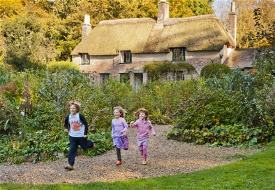 |  | 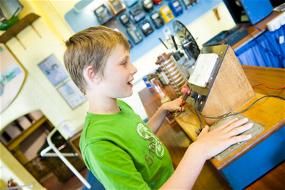 |
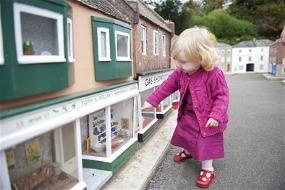 | 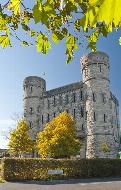 |  |
Contents
ABBOTSBURY: Feed the swans at the Swannery; Say a prayer in St Catherine’s Chapel
BLANDFORD: Dress for best in the fashion museum
BOURNEMOUTH: Hire a beach hut for a day
BRIDPORT: Catch a crab at West Bay
CERNE ABBAS: Tread in the steps of a giant
CHRISTCHURCH: Electrify yourself in Bargates
CORFE CASTLE: Play hide and seek among the ruins
DORCHESTER: Stand trial in the Old Crown Court; Fly a kite on Maiden Castle; Do the drill at the Keep; Pet the animals at Kingston Maurward; Eye up fossils in the County Museum; Toast crumpets in Hardy’s Cottage
KIMMERIDGE: Peer into rock pools at the marine centre
LULWORTH: Dawdle awhile at Durdle Door; Sense the ghosts at Tyneham
LYME REGIS: Walk in the Ammonite Graveyard
MORCOMBELAKE: View the world from Golden Cap
MORETON: Wade across the River Frome
POOLE: Live a life on the ocean wave; Hop on a ferry to Brownsea Island
PORTLAND: Commandeer a king’s castle; Rock on in Tout Quarry; Fish for your supper on Chesil Beach
RINGWOOD: Groom a heavy horse at Verwood; Cycle through the forest at Moors Valley
SHAFTESBURY: Star in an ad on Gold Hill
SHERBORNE: Romance the stones in the old castle
STUDLAND: Leap among the sand dunes
SWANAGE: Spot dolphins at Durlston
TOLLER PORCORUM: Tiptoe through the fields at Kingcombe
WAREHAM: Get in the mood at the Blue Pool; Track down deer at Arne
WEYMOUTH: Spend a day beside the seaside; Watch the birds at Radipole
WIMBORNE: Travel back in time at the minster; Ogle an obelisk at Kingston Lacy
WOOL: Monkey around at Monkey World; Ride in a tank at Bovington
WORTH MATRAVERS: Feel the force in Winspit caves
The Author
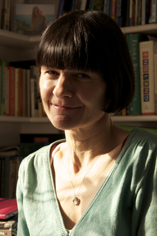 | Born and brought up in Dorset, Sarah-Jane Forder now lives in Dorchester, the county town. She has spent a career in book and magazine publishing, is a former editor of The National Trust Magazine and has worked for Bloomsbury and Jonathan Cape. Since 1996 she has been a freelance writer and editor and is writer and consultant editor of Broadleaf, the Woodland Trust magazine. Feeding her passion for the countryside, history and the downright odd, she’s constantly out and about in Dorset with her daughter and friends. She has written about the current concern regarding children’s disconnect with the natural world and links with global issues, which inspired the research and writing of Kids’ Dorset. Photo courtesy and Copyright of Andrew Wood. |
Extract from the book
Feed the swans at the Swannery
In the 1920s the famous Russian ballerina Anna Pavlova came to Abbotsbury with her dance troupe to practise Swan Lake in an authentic setting. It’s obvious why she made the effort. Home to the largest colony of mute swans in the UK (often more than 600 at any one time), the Swannery is at the extreme western end of the Fleet (see page 00). Eel grass, the favoured food of swans, grows in the shallow brackish water and the shoreline is fringed with reeds, a useful nesting material. Add to that the supplies of fresh water from the streams running into the Fleet, and you have the perfect nesting site for wild swans (though called mute, they do actually snort, hiss and make grunting sounds).
They’re looked after by swanherds, and have been since at least the 14th century when they were eaten as meat by the monks of St Peter’s Monastery in Abbotsbury (you pass the monks’ historic tithe barn, now a children’s play area, on your way to the Swannery). Around 150 pairs breed here, generally staying together for life and returning to the same spot each year. They build their untidy nests all over the place, even on the paths, and they don’t seem to mind the large numbers of visitors. In May and June the fluffy grey cygnets hatch, and some fortunate kids will be asked to help with the mass feeding of the swans which occurs a couple of times a day. (Spot the interlopers – the occasional Australian black swan or Chilean flamingo.)
Every two years, towards the end of July when the swans have lost their flight feathers, the birds are rounded up for monitoring. This massive operation involves a flotilla of canoes herding them from the Portland end of the Fleet to the Swannery bay where they are corralled overnight by a huge boom blocking their way across the lagoon. Early the next day hundreds of local volunteers wade through the water to drive the swans into a holding pen so that they can be examined, weighed and measured.
The Swannery also has a real bouncing bomb (one of the Barnes Wallis prototypes that were tested on the Fleet between December 1942 and March 1943), a working duck decoy (a pond where historically wild ducks were caught for food by being lured into long netted traps) and a tall willow maze in the shape of a swan. Fast-growing willow is handy for making baskets and the Swannery reeds are still used for thatching in the village (see page 00). Even today, feathers from Abbotsbury swans are sent to London to be turned into old-fashioned quill pens by Lloyd’s Register of Shipping. It’s therefore quite possible that the sinking of the Titanic in 1912 was recorded with an Abbotsbury quill.
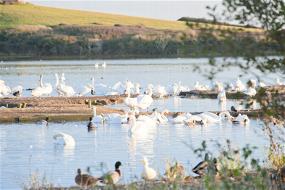 | ‘You can get right up close to the swans, and the cygnets are really cute’ – Samantha |
Reviews
‘We first visited Dorset 3 years ago and have been back every year – it’s so beautiful. The Kids’ Dorset book is great as there are many places we haven't been to in there but will definitely visit on our next holiday!’
Melanie Rowley, winner of competition on www.visit-dorset.com
Links
Official tourism website for Dorset
Ordering
Please CLICK HERE for ordering options